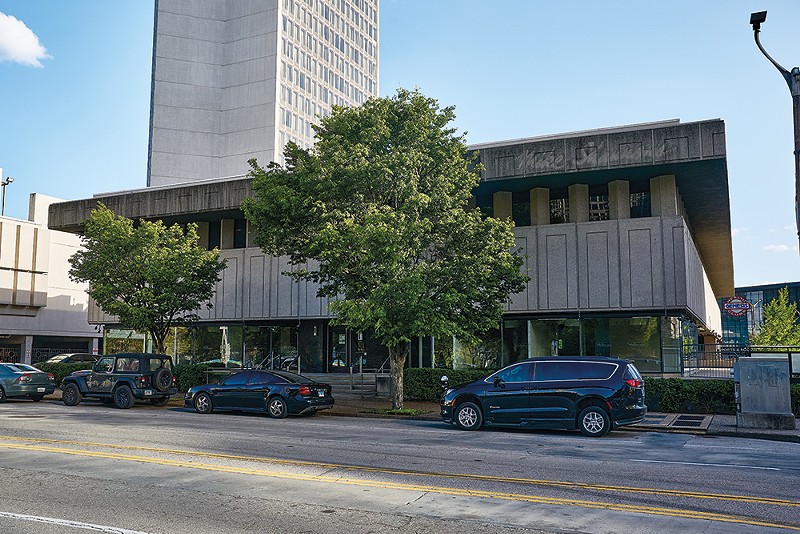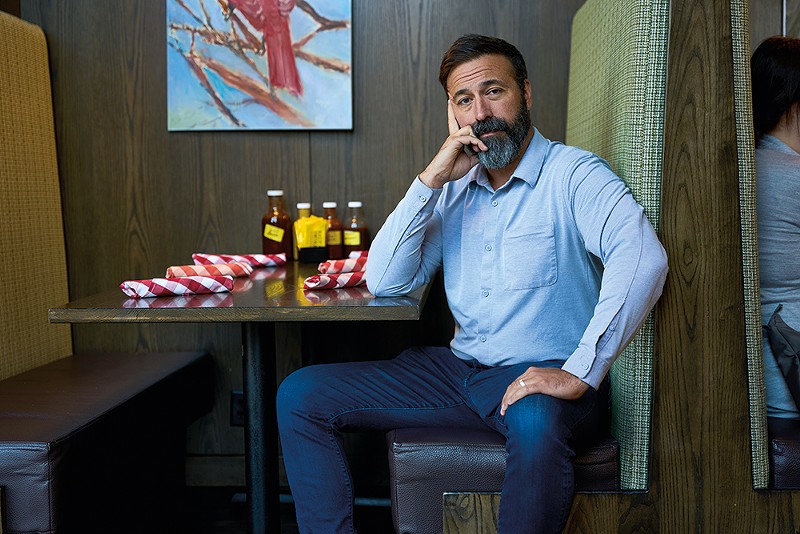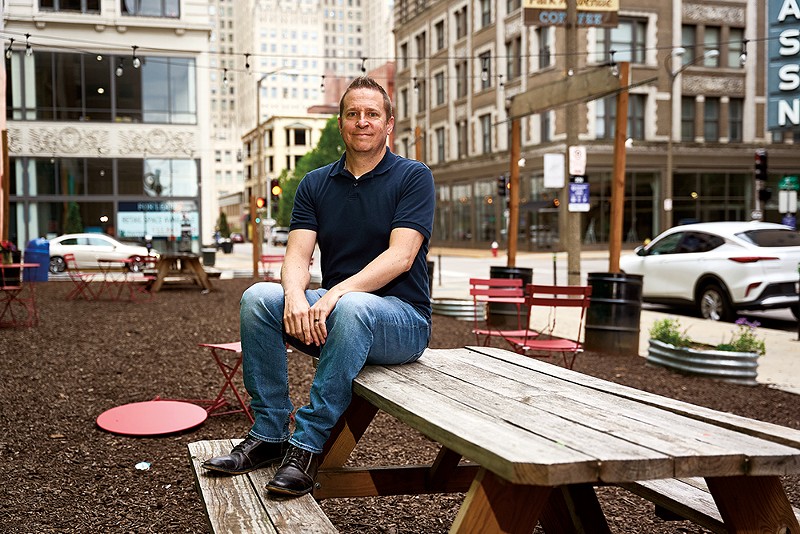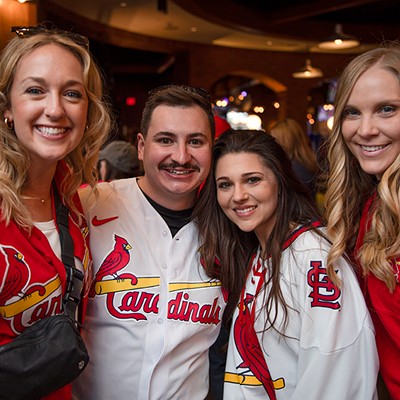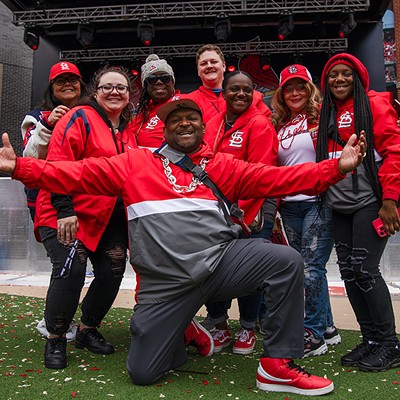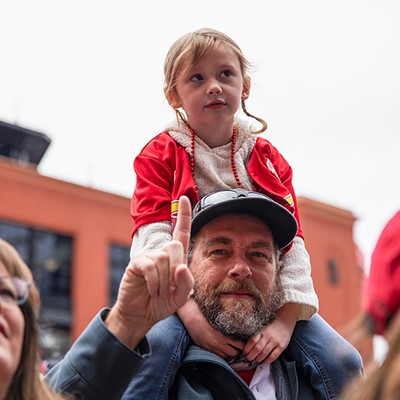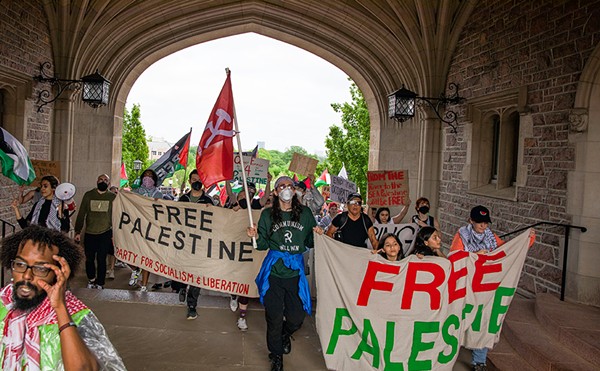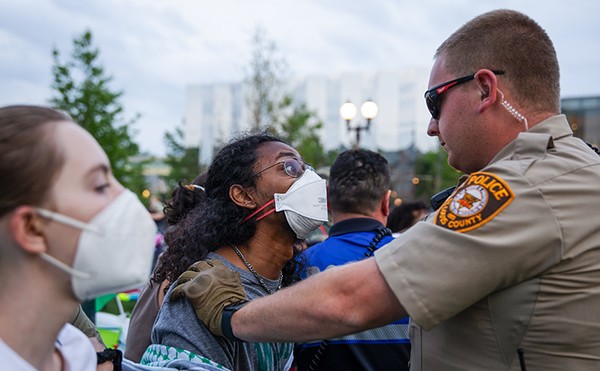This story was commissioned by the River City Journalism Fund.
In the some two decades since the St. Louis Cardinals reached an agreement to obtain public funding for a new stadium, team leaders have touted its economic benefits for the area and described the agreement as unique in professional sports because of how much of the stadium was privately financed.
Local officials often then repeat those leaders’ assertions.
“Home games are invaluable in supporting our local businesses and helping Downtown grow and thrive,” St. Louis Mayor Tishaura Jones stated in a recent news release that claimed the team would generate $310 million in economic impact for the St. Louis metro area this season alone.
While fans certainly spend millions of dollars attending Cardinals games, economists question how much public investment in professional teams’ stadiums here and elsewhere helps the surrounding economy. And in St. Louis, they dispute the claim that the stadium, which opened in 2006, was almost entirely privately funded.
On the opposite side of the state, the owners of the Kansas City Chiefs and Royals are exploring other options after Jackson County voters resoundingly rejected a sales tax to fund a renovation of Arrowhead Stadium and the construction of a new Royals ballpark.
Now the River City Journalism Fund has learned that the Cardinals owners hope to make significant renovations to Busch Stadium in the next five years — and will likely seek public funding for the project, which they say is necessary to keep the stadium viable.
The team president compares the potential scale of the project to two other franchises that each obtained more than $500 million in public funding for stadium upgrades.
And so, three decades after the Busch Stadium negotiations, the Cardinals leadership could soon go to bat again over the idea that stadium projects help taxpayers and are not simply a big win for billionaire owners.
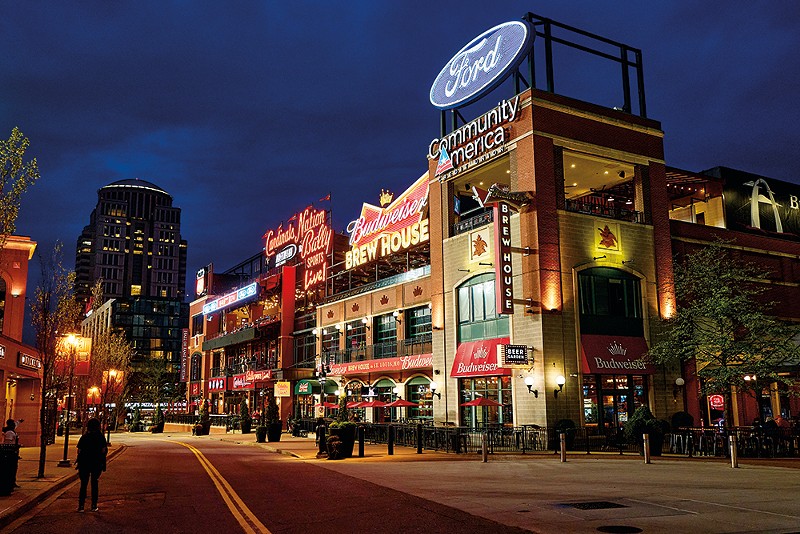
A Family Business
For Cardinals owner Bill DeWitt Jr., baseball — rather than just the Cardinals — is his family business,which, in the American professional sports industry, means he has several times obtained public funding for stadiums.
Unlike most, if not all, other team owners, who made their fortunes elsewhere and then bought a franchise, the DeWitt family’s work in baseball started at the bottom.
Bill DeWitt Sr. entered the baseball business as a teenager in 1916, when he was hired to work the concessions at Sportsman’s Park, then the home of the Browns. Branch Rickey, best known for later breaking the game’s color barrier by signing Jackie Robinson, then hired DeWitt as an assistant, according to Bill DeWitt Sr.: Patriarch of a Baseball Family.
He continued his ascent until he and his brother Charley purchased the Browns for $1 million in 1949, a stake he later sold for$1.5 million. From there, DeWitt Sr. held key roles with the Yankees, Tigers, Reds and White Sox.
DeWitt Jr. was part of a group that purchased the Reds from his dad, and persuaded Cincinnati’s city and surrounding county governments to pay for a new stadium and then lease it to the team for a percentage of its annual revenue, according to the Cincinnati Enquirer.
A city council member who voted against the deal said it would actually cost $52 million, not $42.5 million,and not generate as much revenue as supporters claimed, leaving taxpayers to cover the deficit.
After the governments and team reached an agreement, DeWitt Jr. sold his stake in the team. And indeed, in 1972, the Cincinnati Post reported that there was a $2 million deficit that year between the cost of the stadium to the city and its expected income, costing “every man, woman and child in Cincinnati an average of about $4 a year whether they ever use the stadium or not.”
A couple decades later, DeWitt Jr. purchased the Texas Rangers as part of a group that included future President George W. Bush. They then suggested that they could move the team from Arlington if they were not able to get public funding for a new stadium. The city agreed to spend $135 million to build a stadium, according to the Kansas City Star. A few years later, the group sold the team for a profit of more than $200 million.
DeWitt Jr., who had sold his stake in the team before the other owners, became a minority owner of the Baltimore Orioles, whose previous owners had recently convinced Maryland officials to spend $106 million to build a new stadium. He sold his interest just a few years later and, in 1995, purchased the Cardinals. He and his other investors, who’d grown up with him in St. Louis, paid the Anheuser-Busch brewery $150 million.
The owners told the St. Louis Post-Dispatch that they intended to keep the former Busch Stadium, which was then 29 years old.
“Our honest opinion is that this is a great stadium,” said Frederick Hanser, who was among the new owners. “With a grass field coming in next season, the fans will get a fresh start.”
Less than two years later, the owners began lobbying for public money.They said they needed to renovate the existing stadium or build a new one for the team to remain competitive.
“The plan is to figure out where we can get the money. Start putting the money away and determining what the state, the city, the county and the Cardinals can do,” Tom McCarthy, a lobbyist for the Cardinals, told the Post-Dispatch. “It appears in the long run the public is more capable of handling the burden of providing for the ultimate replacement of the facilities.”
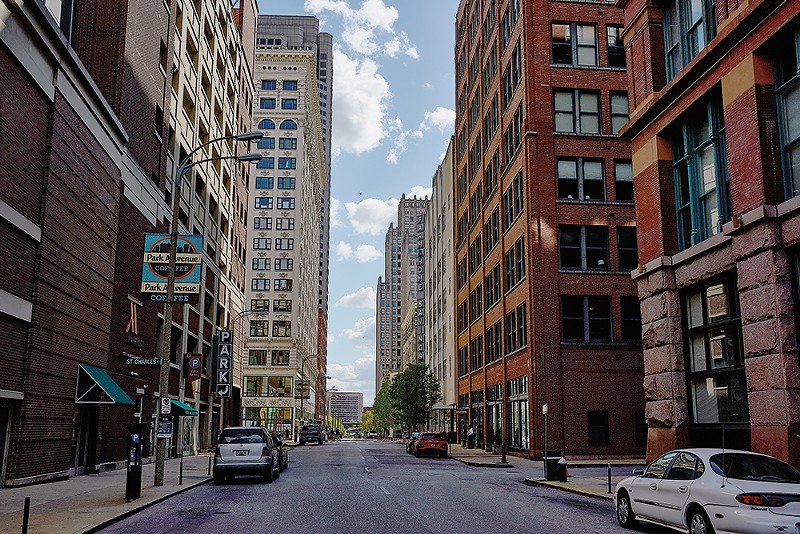
The Quest for Viability
As the team leaders campaigned for a new stadium, they described the old Busch Stadium as no longer a viable option because of its age.
“It’s going to have to be done because if we don’t, we’re putting the franchise at risk,” then-team president Mark Lamping said in 2000, according to the Associated Press. “Busch Stadium is fine now, but it won’t be fine at some point in the future.”
If the team did not obtain public funding for a new stadium, they would have to slash payroll and raise ticket prices, they said.
“The only place we can go to generate more money is to put it on the backs of fans,” Lamping told the Post-Dispatch. “And we can’t afford to do that anymore.”
The alternative, as owners often threaten, is to move the team. Lamping met with then-Illinois Governor George Ryan about building a stadium just across the Mississippi River.
Lamping told the Post-Dispatch in 2002 that the team would continue to negotiate with city and state leaders in Missouri, “but if we can’t get it done and we’re faced with the choice of failing in downtown St. Louis or succeeding a mile east, we believe…that a ballpark site in Illinois can be viable.”
If the team built a stadium in St. Louis, however, it would “revitalize downtown” and “be a sound, solid investment for all Missourians,” Dewitt Jr. said.
The Cardinals, of course, did not leave Missouri, and J.C. Bradbury, a Kennesaw State University economics professor who studies public funding of stadiums, doesn’t think they would have.
“I thought they had the best fans in baseball? That's what I hear every time they are on TV,” says Bradbury. “I think fans and politicians need to understand that really what this is all about is just creating artificial justification for passing the buck along to taxpayers.”
Owners threatening to move unless they obtain money from the government amounts to extortion, according to Brian Hess, a lobbyist who serves as executive director of the Sports Fans Coalition, which opposes public funding of stadiums.
“Teams should be staying in the city that they are in because they are part of the community,” says Hess. “But they don't want to be a part of that community unless that community pays for their palaces.”
A Public Benefit?
Economists dispute the idea that government funding for new stadiums benefits taxpayers.
Between 1970 and 2020, state and local governments dedicated $33 billion in public funding to construct major-league sports venues in the U.S. and Canada, which covered an average of 73 percent of the construction costs, according to a study in the Journal of Economic Surveys.
Team leaders generally claim that the investment will have substantial economic benefits for the surrounding area. In Georgia, advocates for a new Atlanta Braves stadium and surrounding mixed-use development claimed that $300 million in taxpayer funds would be a “billion-dollar home run” for the area, according to the Atlanta Journal-Constitution.
Instead, since opening in 2017, Truist Park and the Battery Atlanta have produced an annual deficit of between $12 to $15 million for Cobb County, according to a report from Bradbury, who also was an author of the Journal of Economic Surveys study.
“It's been studied to death” and economists agree that public funding for a stadium is “unlikely to be successful because for the most part, it’s just changing how people spend their money locally,” says Bradbury. “It's not stimulating any economic development whatsoever.”
In St. Louis, however, Cardinals leadership contends that they paid 90 percent of the stadium’s $400 million cost.
“In an era when most sports facilities were built with a majority of public subsidies, the Cardinals deal was privately financed and involved little public money,” a financing report on Major League Baseball’s website states.
But Judith Grant Long, a University of Michigan associate professor of urban planning and sports management, says that even when considering only some of the costs, 79 percent — rather than 90 percent — of Busch Stadium was privately financed.
And Long’s calculation does not account for the public costs of infrastructure, like the highway improvements made to accommodate the stadium, which cost the state $12 million; the city’s elimination of a 5 percent entertainment tax and abatement of a real estate tax; or public expenses for municipal services.
“I have found that it is fairly typical for teams to not include infrastructure and land costs (or ongoing operating costs), but instead to focus on the building cost alone, since their contributions look bigger when the size of the pie is smaller,” Long writes in an email to the River City Journalism Fund.
The data also does not include subsequent funding for another project Cardinals leaders promoted during their campaign, Ballpark Village, a mixed-use residential, retail and entertainment development.
The team agreed to spend $60 million on the development and complete most of it by 2011. If they did not fulfill that obligation, they would pay the city $3 millionin annual fines.
In 2006, the city and Cordish, a developer that has built similar districts around the country, announced that they had reached an agreement for a $387 million project that would receive more than $100 million in tax incentives. The next year, Centene Corp. announced that it would move its headquarters from Clayton to the development in a $250 million project.
But in 2008, Centene backed out and the Great Recession hit, and the deal, which had been a key bargaining chip to receive public funding for the stadium, fell apart.
The city later agreed to delay enforcing the $3 million penalties until 2016, if the village was not built by 2014.
In any case, even if they had enforced it earlier, “for the Cardinals, that’s roughly the equivalent of a second baseman,” the Post-Dispatch pointed out in 2008, when players cost less than they do now.
The team received $17 million in state and federal incentives to build a scaled-back $100 million first phase of the development and opened it in 2014.
Economists state that such projects often don’t generate additional revenue for the surrounding area but instead just lure customers away from existing businesses.
“By creating these villages, which is a strategy now for sports teams, what do they really do? They absorb even more [customers], and they generally impact local businesses,” says Eric Click, a Webster University professor who studied the economic impact of the stadium and village and now is head of the school’s European academic operations.
And indeed, after it opened, downtown restaurant and bar owners started to complain that they were losing business to Ballpark Village.
Competition Is Healthy
Eddie Neill, owner of the Dubliner, a multilevel Irish bar on Washington Avenue, told the Riverfront Times in 2014 that he’d made less money than in previous years but that he still thought the year-old Ballpark Village complex could be good for downtown.
“In retrospect, Ballpark Village may be a gift for all of us to think more about our clientele and what we're doing," Neill said then. "As far as I'm concerned, it's going to help in the long run in the viability of the area. I think something new can be created for the city."
A year later, he closed the Dubliner. Neill, who is also an owner of Café Provencal in Kirkwood, says that his Dubliner revenue decreased from about $2.5 million in 2013 to $1.9 million in 2014. As fewer people walked along Washington Avenue, the street became less safe for the remaining customers, Neill says.
A couple months after the Dubliner closed, Patricia Shannon closed Mike Shannon’s Steaks & Seafood, which had been a mainstay for fans before and after Cardinals games.
She and Neill both say the problem was that at that point Ballpark Village was just an eating and dining destination, even though it had been billed as a mixed-use development that would include offices and residences.
“There wasn't that influx of living and businesses that Ballpark Village was trying to attract,” Shannon says.
And the number of conventions and out-of-town visitors slowed after the recession and because of media coverage of protests in the wake of the police shooting of Michael Brown in 2014, Shannon says.
Add additional bars and restaurants to “an already depressed area, and that I think is the triple whammy that happened to” Shannon's, she says.
Harry’s Restaurant & Bar also closed in 2016 after more than two decades; the owner told the Post-Dispatch that Ballpark Village took away 70 percent of his business and was “the nail in the coffin.”
The Cardinals and Cordish eventually opened an office space, the PwC Pennant Building, in 2019, and an apartment building, One Cardinal Way, in 2020.
Drew Clary, a 32-year-old commercial real estate broker, was one of the first people to move into an apartment. His overlooks Busch Stadium.
A big sports fan, Clary loves how easy it is to walk to local stadiums.
“There's not another luxury apartment like it,” Clary says. “The fact that you can watch Cardinals games” and “you have a pool and can make friends there, it's just really cool.”
Still, some people are afraid to visit downtown because of crime — let alone live there.
The area received increased scrutiny over the past year after reckless drivers hit a teenage girl who had to have her legs amputated and killed a mother and daughter.
Clary says he enjoys spending time in and around Ballpark Village, but does not venture outside of that area downtown much. He has secured parking in his building, but on one of the occasions he parked in the unsecured area, his car was broken into, and he hears gunshots multiple nights each week.
But he points out that his car could have just as easily been broken into elsewhere in the city.
“The building itself is pretty secure,” says Clary, a Springfield native. “I tell people, it's kind of like a resort in Mexico, you just don't stray too far from it.”
Daniel Pistor lives in a loft on Washington Avenue and acknowledges there are issues downtown, like people renting Airbnb properties to throw parties that spill out into the street, including a shooting last year in which 10 teens were injured and one was killed.
Still, Pistor, chair of the St. Louis Downtown Neighborhood Association, feels safe walking around the area and sees the Cardinals as an asset for downtown.
Also, as the restaurant industry is always tough, it’s possible that Shannon’s and the Dubliner would have closed even if it weren’t for Ballpark Village. Longtime downtown establishments like Broadway Oyster Bar and Paddy O’s are still open.
Tom Schmidt, owner of the Salt + Smoke barbecue restaurants, opened a location at Ballpark Village in May 2021 and says it’s now his busiest restaurant.
“Competition is healthy,” says Schmidt. “You need new players that bring a new life, and it might disrupt other players for a short period of time while they [evaluate] ‘what do we need to do to compete?’ Not to get too philosophical, but that's kind of the American dream, right?”
Downtown’s Challenges
So have the Cardinals revitalized downtown as DeWitt pledged in 2001?
The team claimed after the 2022 season that Busch Stadium had produced $43 million in tax revenue to the city and state that year and a total of $545 million since the new stadium opened in 2006, according to a report on Major League Baseball’s website.
The opening day press release from Explore St. Louis and Greater St. Louis Inc., two groups that promote economic development and tourism, touted that the Cardinals would generate $310 million in economic impact for the St. Louis metro area because of items such as ticket purchases; food and entertainment at or near the stadium; and out-of-town visitors staying at hotels, as well as “indirect economic impact,” meaning “business-to-business purchases in the regional supply chain that stem from the initial direct purchases.”
Bradbury, the economist, does not see either claim as credible because of research showing that stadiums just draw money away from other entertainment options. Plus, he has never seen any stadium generate that much revenue.
“These types of fantasy documents that are put out” are “pretty common. No economist takes them seriously,” he says.
Indeed, the team does not appear to have been transparent in its tax revenue report on MLB’s website. It says the money comes from Busch Stadium and does not mention Ballpark Village. When asked whether those numbers include revenue from the development, Cardinals spokesperson Carson Shipley confirms that, yes, they do include money from Cardinals Nation, a 34,000-square-foot space inside the village that features a two-story restaurant and bar. And that could, of course, draw customers away from outside businesses.
When asked why the report did not mention Ballpark Village, Shipley states, “The numbers on the website reflect the amount of taxes paid to the City and the State directly by the St. Louis Cardinals, which includes those three specific locations that are housed in Cardinals Nation.”
Click, the Webster University professor, argues the reason the team does not mention that the revenue includes the village is “because it paints a better picture for Busch Stadium.”
But since they are separate entities and “there is public funding involved, there really should be that level of transparency,” he says.
Economists have also found that construction of stadiums does not create additional jobs — as stadium subsidy proponents claim — but instead just takes workers away from other projects.
In the decade before the city helped pay for the construction of Busch Stadium, it did the same thing for the Rams and the Blues. A report in the Journal of Urban Affairs found no evidence that construction employment or wages increased in the St. Louis area during the stadium construction as compared to when the government was spending similar amounts of money to build roads in the area.
And many of the jobs that are created by a sports team — ushers, concessionaires — are often low-wage and seasonal. There are, after all, only 81 regular-season home games each year.
On a positive note, between 2011 and 2016, each Cardinals game generated 2,200 additional hotel room occupancies and $330,000 in additional hotel revenue, according to a study in the Applied Economics Letters journal. But the researchers determined that was still not enough economic surplus to justify the public subsidy for the stadium.
There are, of course, less tangible benefits of having a professional sports team, particularly one with a storied history and record of success like the Cardinals. See Adam Wainwright sending the Cardinals to the 2006 World Series by turning Carlos Beltran into a pillar of salt as he struck out looking or David Freese throwing his helmet to the ground after hitting a walkoff homerun in Game 6 of the 2011 World Series.
“The civic pride, the memorable moments — all of those are a result of athleticism and fandom. None of that is dependent on tax money,” says Hess.
Even if the stadium and Ballpark Village have produced positive economic ripple effects for the area, plenty of problems remain downtown — as Cardinals president Bill DeWitt III (third generation of baseball leadership) himself conceded in a 2023 interview with the St. Louis Business Journal.
“I just feel like we've hit bottom on many levels, including activity levels, development levels and safety and security levels, and it feels to me like we’re on a really good trajectory there,” DeWitt III said at the time.
DeWitt III tells the River City Journalism Fund that he was referring to the emptying out of downtown that occurred because of the COVID-19 pandemic and that activity downtown and attendance to Cardinals is returning to pre-pandemic levels.
He says people have “legitimate concerns” about safety downtown, but that those worries “have largely been addressed.”
The Downtown Community Improvement District and the St. Louis Police Foundation, both nonprofits, have over the last year increased their funding for extra police and security patrols in the area. And the Cardinals are working with parking operators around the stadium to coordinate safety, DeWitt III says.
“Fans should not be worried about safety and security coming downtown,” he says.
A “Significant” Infusion
For the positive momentum to continue, DeWitt III says Busch Stadium will need a “significant capital infusion” in two to five years. It’s “too early” to detail what the improvements would look like, he says. “Our goal would be to handle whatever back of the house things need to happen and to fix [them], as well as probably create some cool and interesting new features for fans.”
The owners would likely seek public money for that, he adds.
When asked how much such a project would cost, DeWitt III says it would likely be in a similar range to recent Milwaukee Brewers and Baltimore Orioles projects. Those are $500 million and $600 million taxpayer investments, respectively.
Yet while agreements to upgrade those stadiums — both of which opened in the last 32 years — may make it seem as though the Cardinals obtaining public funding is a foregone conclusion, that may not necessarily be the case. The city’s infusion of funds to the Blues’ Enterprise Center, for example, generated bitter pushback from the Board of Aldermen in 2016 and would likely have never gone through without the machinations of then-Aldermanic President Lewis Reed. Reed is now in prison, and his successors take a far dimmer view of public financing for stadiums. City voters also said no to funding for an MLS stadium in 2017.
They’re not alone. On April 2 in Jackson County, 58 percent of residents voted against a sales tax measure that would have provided $2 billion for the Chiefs and Royals stadium projects.
“It shows what people across the country already know and feel: It’s that taxpayer dollars to sports stadiums is a bad idea for the community,” says Hess.
After the vote, the wife of the Royals owner wrote on Facebook, according to the Kansas City Star, that “neither team will work with Jackson County again…We will be lucky if both teams wind up in Kansas. At least still in the area!”
Kansas Governor Laura Kelly has said she would support the Chiefs moving across state lines. But that also does not mean that Kansas taxpayers will support funding a stadium.
After Ted Leonsis, the billionaire owner of the Washington Wizards (NBA) and Capitals (NHL), failed in his effort to move the teams to Virginia and build a $2 billion stadium — $1.5 billion would have come from public bonds — he had to make an about-face and return to the negotiation with Washington, D.C., officials. They reached an agreement on a $515 million publicly funded stadium, a fraction of the cost of the Virginia stadium.
Democratic lawmakers, labor unions and Washington and Virginia residents had campaigned against the Virginia deal.
“It was really the first time in recent history where an active citizenry pushed back and educated lawmakers on a deal like this. It's been a wake-up call for a lot of people,” says Hess, of the Sports Fans Coalition, who lobbied against the bill.
When asked about potential funding for a Busch Stadium renovation, spokesmen for the Missouri governor and St. Louis city and county, respectively, all said they could not comment on potential public funding for Busch Stadium upgrades until they had an actual proposal.
In the meantime, rather than debate public funding for a new stadium, the best fans in baseball will focus their attention on the success of the team — or lack thereof.
After one of the worst Cardinals seasons in decades, St. Louis residents were especially loud in expressing the perennial complaint that ownership is cheap and that team leadership makes bad decisions when it comes to improving its roster.
Fans wanted ownership to bring back pitcher Jordan Montgomery, who ultimately only signed a one-year deal with the Arizona Diamondbacks for $25 million, a relatively reasonable, safe bet.
But John Mozeliak, Cardinals president of baseball operations, expressed confidence in the rotation, which has an average age of 34; in baseball years, that means a player’s best days are likely in the rearview mirror. Mozeliak told the Associated Press of the rotation, “unlike our upcoming election, I am not overly concerned with age.”
It’s also plausible that there is a correlation between payroll spending and the team’s economic impact. The press release from Explore St. Louis and Greater St. Louis in 2023 claimed that the team would produce $350 in economic impact; this year the figure was only $310 million. Tony Wyche, Greater St. Louis chief communications officer, says the $40 million decreasewas due to lower projected attendance figures provided by the team. That decrease is also notable because of inflation between 2023 and 2024.
If the team isn’t performing well, fans are less likely to come downtown.
Profits and Possibilities
DeWitt Jr. has sometimes presented his team as operating under difficult circumstances.
“The industry isn't very profitable, to be honest," DeWitt Jr. said on 590 The Fan in 2020.
If that’s the case, then what is profitable? He and his business partners purchased the team for $150 million in 1995. Now it’s worth $2.5 billion, according to Forbes, a 1,566 percent increase.
But DeWitt III tells the River City Journalism Fund that the team spent as much money as it could afford this off-season.
“We are absolutely committed to winning,” DeWitt III says. “We pretty much put all of our resources that we have available because of our great fan support and other revenue streams to fielding the best product we can on the field.”
As to what the future holds for that field and stadium, DeWitt III says, “I think it would be in everybody's interest for the Cardinals to be downtown indefinitely, and that's certainly our goal, but we also need to make sure our facility is viable.”
Editor's note: A previous version of this story referred incorrectly to which team signed Jordan Montgomery for $25 million. It was the Arizona Diamondbacks. We regret the error.
This story was commissioned by the River City Journalism Fund, which seeks to advance local journalism in St. Louis. See rcjf.org for more information.
Subscribe to Riverfront Times newsletters.Follow us: Apple News | Google News | NewsBreak | Reddit | Instagram | Facebook | Twitter | Or sign up for our RSS Feed


